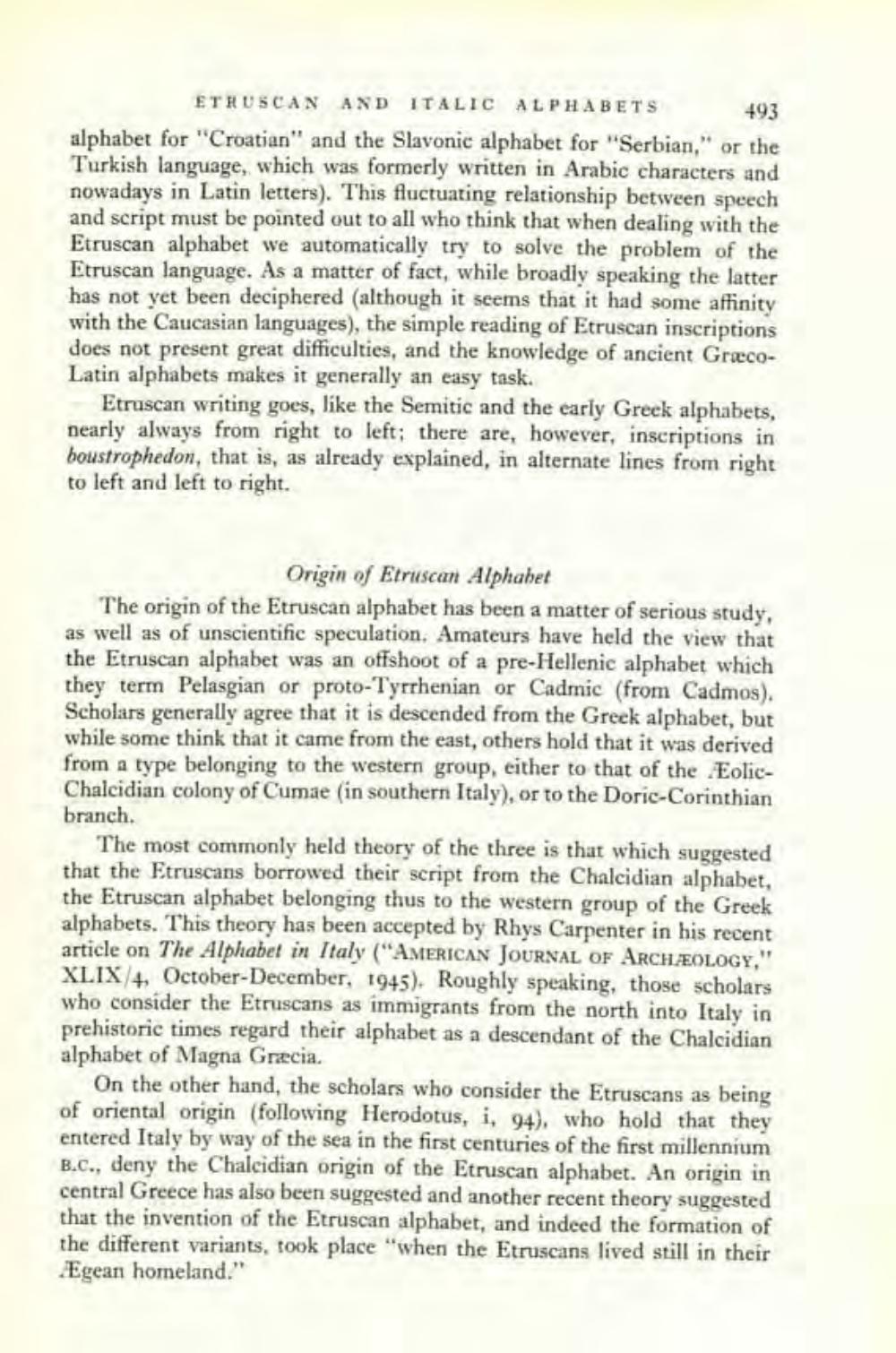________________
ETRUSCAN AND ITALIC ALPHABETS
493
alphabet for "Croatian" and the Slavonic alphabet for "Serbian," or the Turkish language, which was formerly written in Arabic characters and nowadays in Latin letters). This fluctuating relationship between speech and script must be pointed out to all who think that when dealing with the Etruscan alphabet we automatically try to solve the problem of the Etruscan language. As a matter of fact, while broadly speaking the latter has not yet been deciphered (although it seems that it had some affinity with the Caucasian languages), the simple reading of Etruscan inscriptions does not present great difficulties, and the knowledge of ancient GræcoLatin alphabets makes it generally an easy task.
Etruscan writing goes, like the Semitic and the early Greek alphabets, nearly always from right to left; there are, however, inscriptions in boustrophedon, that is, as already explained, in alternate lines from right to left and left to right.
Origin of Etruscan Alphabet
The origin of the Etruscan alphabet has been a matter of serious study, as well as of unscientific speculation. Amateurs have held the view that the Etruscan alphabet was an offshoot of a pre-Hellenic alphabet which they term Pelasgian or proto-Tyrrhenian or Cadmic (from Cadmos). Scholars generally agree that it is descended from the Greek alphabet, but while some think that it came from the east, others hold that it was derived from a type belonging to the western group, either to that of the EolicChalcidian colony of Cumae (in southern Italy), or to the Doric-Corinthian branch.
The most commonly held theory of the three is that which suggested that the Etruscans borrowed their script from the Chalcidian alphabet, the Etruscan alphabet belonging thus to the western group of the Greek alphabets. This theory has been accepted by Rhys Carpenter in his recent article on The Alphabet in Italy ("AMERICAN JOURNAL OF ARCHAEOLOGY," XLIX/4, October-December, 1945). Roughly speaking, those scholars who consider the Etruscans as immigrants from the north into Italy in prehistoric times regard their alphabet as a descendant of the Chalcidian alphabet of Magna Græcia.
On the other hand, the scholars who consider the Etruscans as being of oriental origin (following Herodotus, i, 94), who hold that they entered Italy by way of the sea in the first centuries of the first millennium B.C., deny the Chalcidian origin of the Etruscan alphabet. An origin in central Greece has also been suggested and another recent theory suggested that the invention of the Etruscan alphabet, and indeed the formation of the different variants, took place "when the Etruscans lived still in their Egean homeland."




